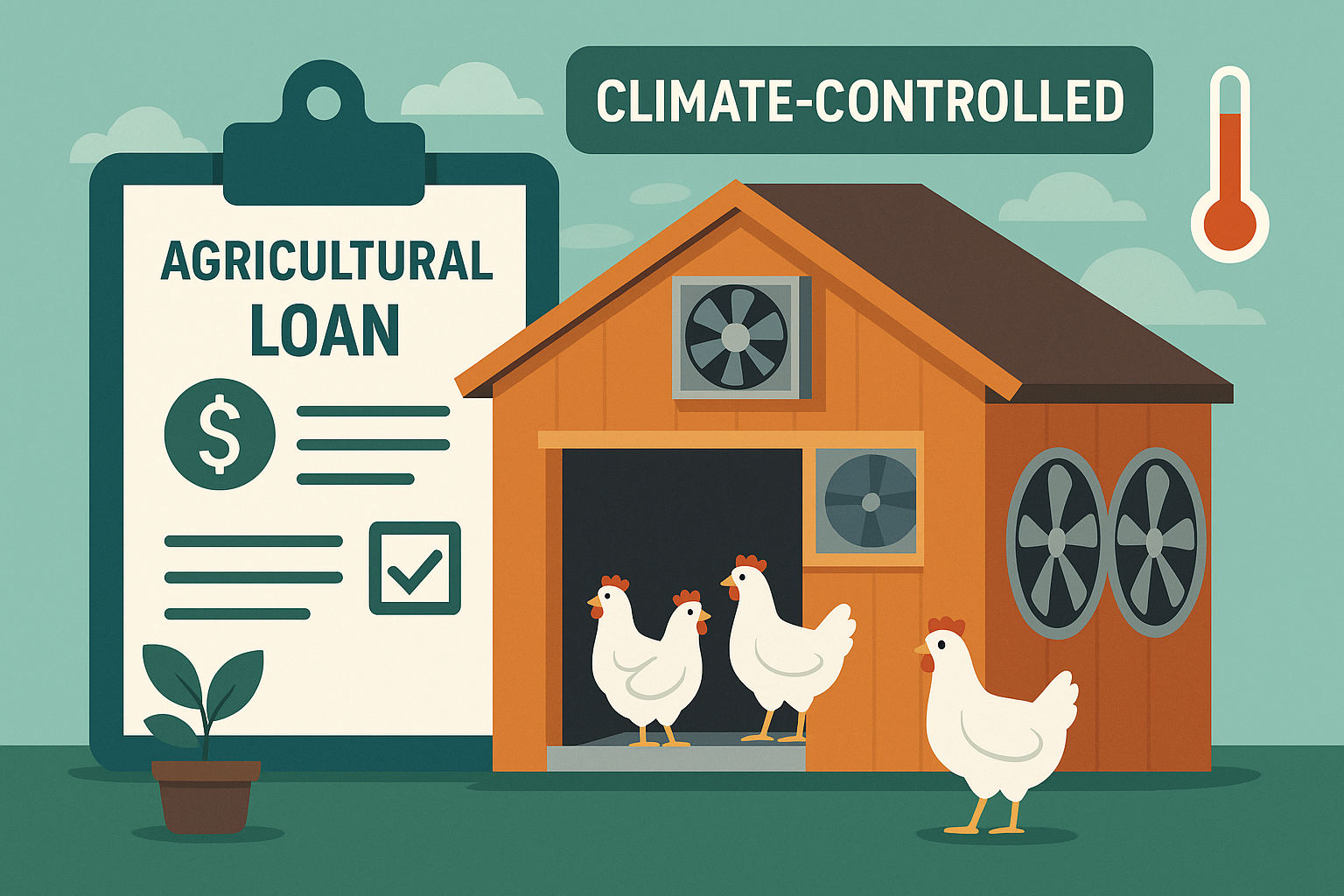Funding Poultry Farm Equipment: Housing and Feeding Systems
Modern poultry farming requires more than just land and birds — it demands specialized equipment to ensure healthy flocks and efficient production. From automated feeders to climate-controlled housing, these systems can be costly. Fortunately, there are funding options for poultry farm equipment that can help you get what you need without straining your budget.
Can You Finance Poultry Housing and Feeding Systems?
Yes! Poultry farmers can finance housing, feeding, watering, and climate control systems through agricultural loans, equipment leasing programs, and government grants.
Why Finance Poultry Farm Equipment?
Investing in housing and feeding systems ensures:
-
Better bird health through controlled environments
-
Reduced labor costs with automation
-
Higher production efficiency
-
Compliance with animal welfare standards
-
The ability to scale operations faster
Related: How Equipment Financing Can Boost Your Company’s Cash Flow
Equipment You Can Fund
🏠 Housing Systems
-
Climate-controlled poultry houses
-
Automated ventilation and heating
-
Lighting and energy management systems
-
Egg collection conveyors
🍽️ Feeding Systems
-
Automatic feed dispensers
-
Chain feeders and pan feeders
-
Feed storage silos
-
Precision feed weighing systems
💧 Watering Systems
-
Nipple drinkers
-
Bell drinkers
-
Water filtration and pressure regulators
📊 Monitoring & Control
-
Environmental sensors
-
Flock management software
-
Automated mortality tracking systems
Funding Options for Poultry Farmers
1. Agricultural Equipment Loans
-
Offered by banks, credit unions, and co-ops
-
Terms from 3–10 years
-
Can finance new builds or equipment upgrades
2. Equipment Leasing
-
Flexible lease lengths
-
Option to upgrade as technology improves
3. Government Grants & Programs
-
USDA Rural Development grants for certain equipment upgrades
-
REAP grants for energy-efficient poultry housing
-
State-level ag funding programs
Learn more: USDA Rural Development Grants ↗️
4. Vendor Financing
-
Poultry equipment suppliers often offer in-house financing
-
Bundled packages for housing, feeding, and climate systems
-
May include service agreements
Estimated Costs & Monthly Payments
| Equipment | Cost Range | Lease Estimate (5 yrs @ 7%) |
|---|---|---|
| Climate-controlled housing | $150,000–$300,000 | ~$2,900–$5,800/month |
| Automated feeding system | $10,000–$25,000 | ~$190–$480/month |
| Feed storage silo | $5,000–$12,000 | ~$95–$230/month |
| Ventilation & heating system | $15,000–$40,000 | ~$290–$770/month |
6 Steps to Fund Poultry Farm Equipment ✅
-
Assess your farm’s needs and priorities
-
Get multiple equipment quotes from trusted suppliers
-
Research lenders or lease providers
-
Prepare financial documents (tax returns, farm income)
-
Compare terms, interest rates, and repayment schedules
-
Sign contract and arrange equipment delivery/installation
Related: Understanding the Equipment Leasing Process Step-by-Step
Pros and Cons of Financing
✅ Pros:
-
Preserve working capital
-
Access better technology sooner
-
Potential tax deductions
-
Flexible repayment terms
❌ Cons:
-
Interest costs over time
-
Possible collateral requirements
-
Long-term commitment
What You’ll Need to Apply
-
Business/farm registration or EIN
-
Recent financial statements or tax returns
-
Credit score (preferably 600+)
-
Equipment quotes or purchase agreements
Summary: Funding Poultry Housing & Feeding Systems
-
Finance poultry housing, feeding, and watering equipment
-
Choose loans, leases, grants, or vendor financing
-
Improve efficiency and flock health without draining capital
Final Thoughts: Build a Better Poultry Operation
Your poultry farm’s success depends on having reliable, efficient housing and feeding systems. With the right funding, you can improve bird health, streamline operations, and boost profitability — all without exhausting your working capital.
Take Action: Apply for Poultry Equipment Financing Today
Ready to upgrade your poultry housing or feeding systems?
Apply now for financing options designed for farmers — with terms that work for your seasonal cash flow.











